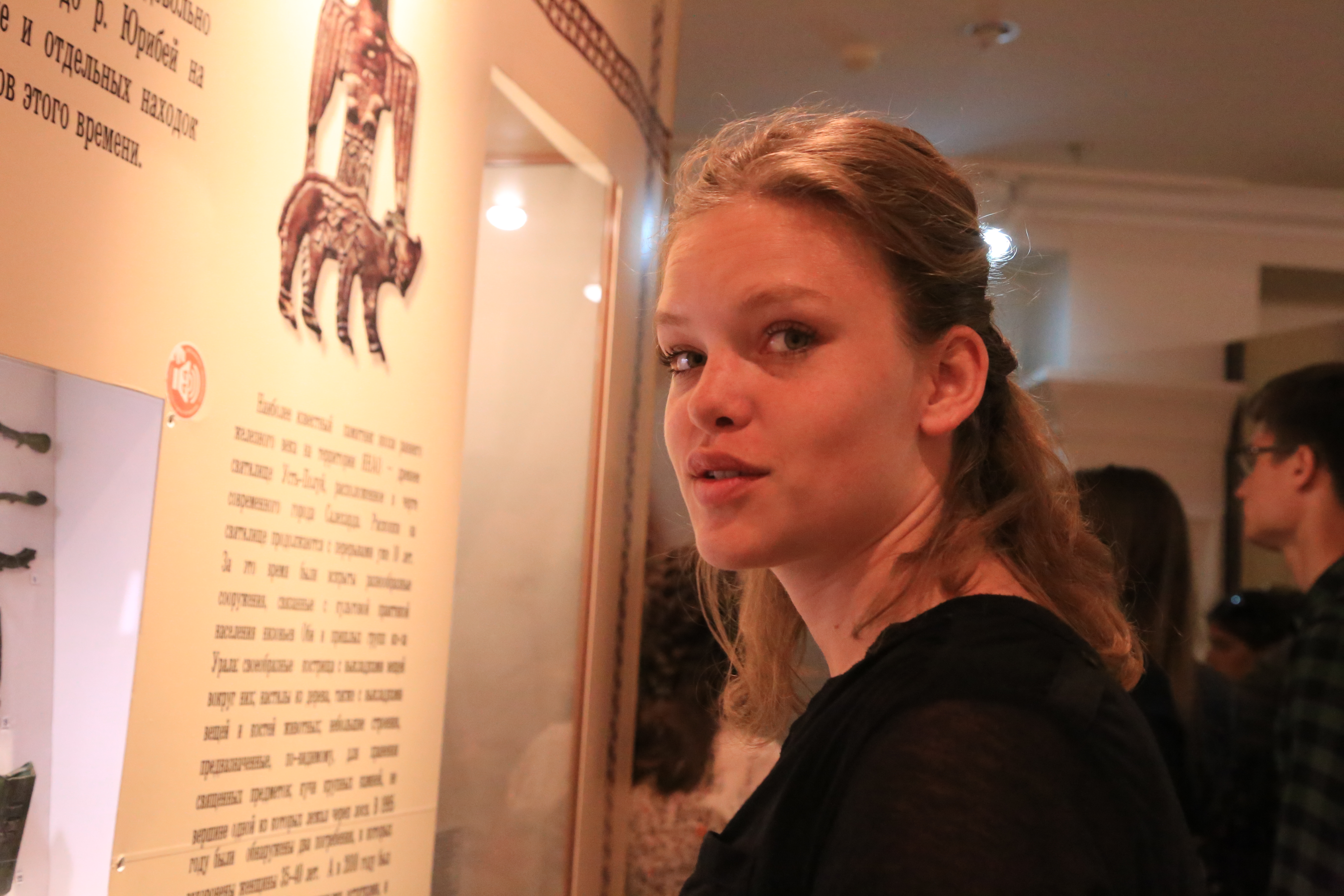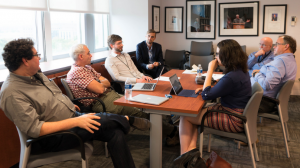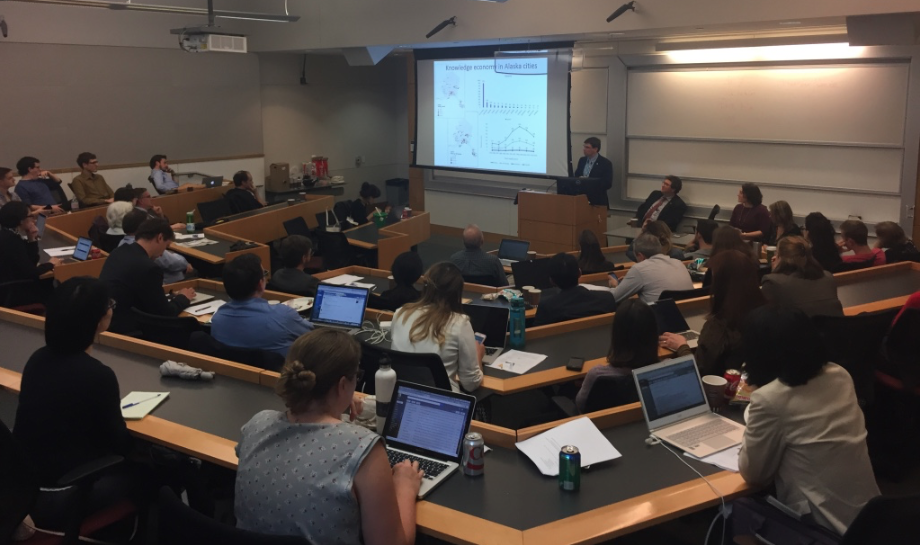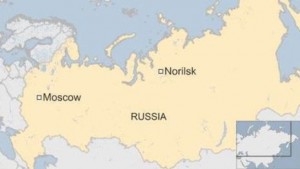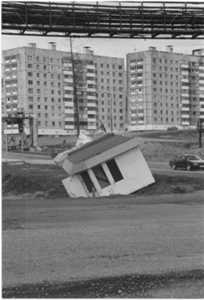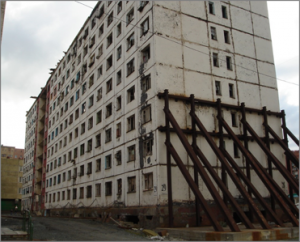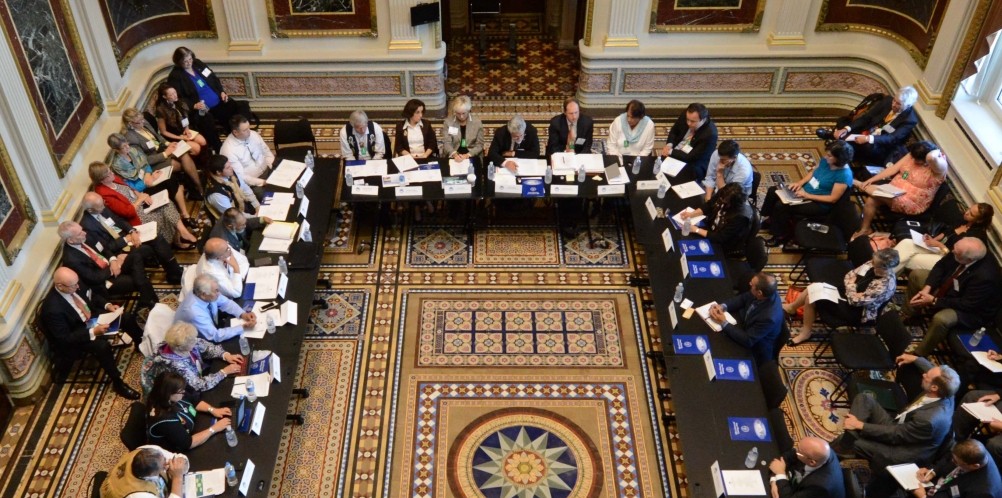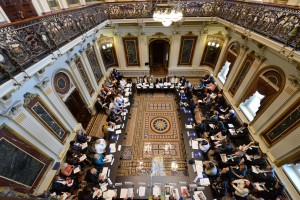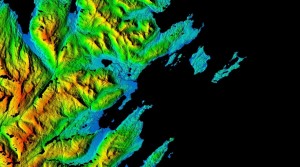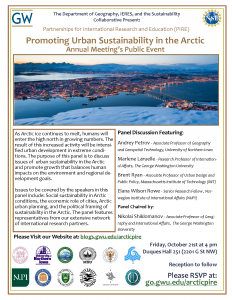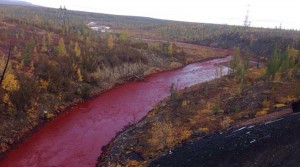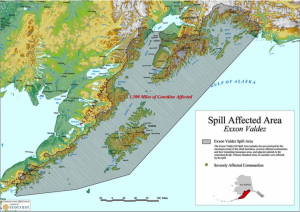During the Summer of 2017, the PIRE team made a research trip to the Russian cities of Salekhard and Vorkuta. Here we present some of the student descriptions of the trip.
July 9:
Anna Zhu
Of the 11 glaciers that previously existed in the region, only 2.5 remain. Today, we journeyed to the Ray-Iz glacier and plateau region of the Polar Urals. Formed during the Jurassic Era by active volcanic fissures and surface lava flow, the region and its glaciers are extremely important indicators of glaciation evolution and climactic changes. The glaciers are unique as they are located at an elevation of 1,200 meters, which is below the snow line of 1,800 meters, and are formed solely by wind redistribution of snow from plateaus to cirques. This dry region was widely

glaciated in the Pleistocene Era and is characterized by rare mineral resources in rock formations. We also observed many periglacial features, such as kettle and tarn lakes along with avalanche cones and talus.
Unfortunately, our hike was cut short when we reached frozen and icy conditions on the way to the glacier and it was too dangerous to proceed. From a distance, we learned that the glacier is receding and degrading. We then continued to observe the landscape, studying the varied ground patterns characterized by slopes, frost boils, and pingos. An earth covered ice mound, pingos are usually located in drained lakes where they have access to moisture. Groundwater moment and top down freezing combined with increased pressure forces water to move upward in the path of least resistance, raising the ground into a mound that creates the pingo formation. After learning about the landscape, we arrived at a river and completed our day with a picnic with a picturesque view.
9 июля:
Claire Franco
Сегодня мы поднимались в горы, чтобы посмотреть известный ледник в массиве Рай-Из, который находится на Полярном Урале. В 1960-ом году ученые нашли 11 ледников в этом районе, на сегодняшний день осталось только 2-3. По дороге на ледник мы проезжали поселок Харп, где находится “Полярная сова” – исправительная колония особого режима для пожизненно осужденных. Там заключенные собирают мебель. Вдоль дороги почти не встре чалась растительность, кроме некоторых видов трав. Но когда мы поднялись по склону, открывшийся вид с гор был похож на пейзаж Марса. На склоне горы, Валерий Иванович показал нам, как вода размывает горные породы, в результате чего образуются горные долины. К сожалению, дальнейший путь был опасен и наше профессора показали нам образование бугров пучений вместо этого.
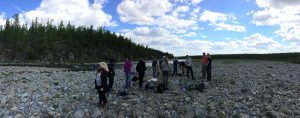
Мы обедали рядом с горной рекой. Никита, один из русских студентов, показал мне основные типы облаков в небе. Тереза из Германии научила нас пускать блинчики на воде реки.Наш прибрежный пикник закончился и мы поехали домой. Вечером в гостинице мы слушали студенческие доклады о Арктике.
July 12th
Nina Feldman
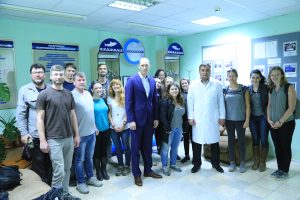
The day started off a bit fishy. An aroma of excitement and curiosity filled the air as the students loaded the bus. We were off to visit a local fish factory in Salekhard. After being kindly greeted by the Director and Head Engineer of the factory, we were fitted with the appropriate factory attire. Sporting thin white coats and blue hair nets, we followed our hosts through a thorough tour of the production facilities. We saw how the workers canned, labeled, smoked and tested various types of fish. At the end of the tour the Director took us to a conference room that had a large spread of all the fish they sold at the factory ready for us to sample. The factory’s hospitality made for one of the most unique and exciting parts of the trip, and one I will remember.
Following the factory fish feast was a day of museum touring. We started with the Craft Museum in Salekhard where we saw various artifacts carved by the indigenous people of Siberia. Intricate tusks displayed detailed carvings depicting different beliefs and stories of these people. Next was the Geology Museum in Labytnangi. This museum

was definitely a diamond in the rough. The halls were filled with a large collection of minerals and stones extracted from around the area, as well as drilling samples and interactive exhibits that explained how they were able to find what they have found. We ended with a tour that took us back in time, following the lives of indigenous people throughout history. We learned how the Komi people used Birch bark to build their canoes and huts, and how the Khanty considered themselves to be descendants of bears and had a sacred bear festival every time one was killed.
What was great about this day is that through it all we were able to capture the historic, geologic and local feel of the region. As a result, we were able to gain a better understanding and appreciation of the community we were living in.
July 13th
Anna Sumi
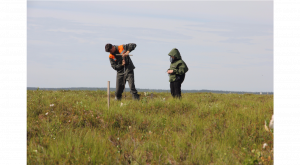
I’m one of those college students who got through my hard science requirements my freshman year, in a hurry and with my eye lids half open. So I think it’s fair to say I had no clue what it meant when we were told we would be “in the field” for the day. I nodded along in feigned understanding and put on my olive green farm boots as instructed before settling into the bus with a false feeling of preparedness.
That day we were in the Tundra measuring active layer thickness and temperature. That day also presented the added challenge of pretending to act naturally as two Russian TV crews followed us around with their cameras. While I may have never felt completely prepared for the Tundra, at least I was not wearing a skirt and brocade tights like one of the journalists, who had clearly not thought through the landscape she would find herself in. I watched with a look of sympathy as she attempted to take a shower in bug spray.
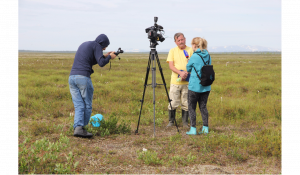
Somehow that ill-prepared TV anchor survived her day in the Tundra and later that night we gathered in Abby and Anna’s hotel room, crowding onto the two twin beds. The box of a television, sitting in the corner broadcasting the local news, held our full attention. After an hour of bated breath and hasty translations from the two of the group who had a light grasp on Russian, we realized they were not using our feature that night. Luckily, two minutes later, Luis walked into the room with his computer queued up to the broadcast from another channel. We huddled around that computer and giggled and gasped with recognition as our faces appeared on the screen. It was yet another once in a lifetime experience on our trip to Siberia.
July 18:
Claire Franco
In the morning, we collected our things and prepared for a 10-hour train ride west across the Polar Urals toward Vorkuta. At breakfast we learned that our train left two hours later then we had planned because all trains in Russia operate on Moscow time rather than local time. I used this extra minutes to finish some letters and send them through the local post office. Stamps for these two letters, one to California and one to Belarus, together cost less than $2.50 and I’ve made bets on how long each will take to reach its recipient.
Once our train was on its way, the usual rounds of card games and crossword puzzles began. The day before, I had expressed interest in Russian music to one of our GW professors, Nikolay Shiklomanov. In preparation for our long journey by train, he made a playlist of songs which loosely chronicle Soviet and Russian history from World War II until the 1990s. It began with war ballads made popular by Soviet
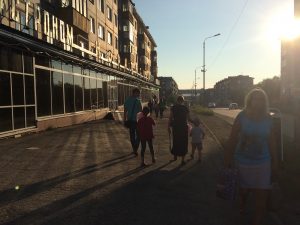
films, such as Two Soldiers (Два бойца, 1943) and Belorussian Station (Белорусский вокзал, 1971). Then came the bards like Vladimir Vysotsky (Владимир Высоцкий) whose music was typically self-published and consisted of only a single voice accompanied by a guitar. This genre is called bardovskaya (бардовская) or avtorskaya (авторская) music. The playlist included a song about Soviet-Jewish emigration to Israel and another about the human expense of the gulag system. The final decades of the USSR were represented in the selection by the bands KINO (КИНО) and DDT (ДДТ), among others. This historical narrative in songs was supplemented by an MSU professor, Nadezhda Zamjatina, who wrote me her own list of significant music, films, and literature, focusing on those related to the Arctic territories.
The train was extremely warm and we were all grateful to arrive in Vorkuta, where the night time hours were only slightly darker and the city’s European orientation was immediately more evident in the architecture.
July 19:
Anna Zhu
The professors organizing the trip have long collected ice data in Siberia as part of a project known by its acronym CALM. Located approximately 10 kilometers outside of Vorkuta, CALM Site 2 rests in a typical southern tundra landscape. Established in 1996, this CALM site collects active layer depth, temperature, and soil moisture data and monitors the spatial variation of landscapes. Taller shrubs, dwarf shrubs, and willows characterize the typical southern tundra landscape. There exists no permafrost under taller shrub vegetation, while there is extremely shallow permafrost under dwarf shrubs. Observations of the extremely dry landscape show that the south-facing slope exhibits colder conditions with a shallower active layer. The north-facing slope, on the other hand, exhibits warmer conditions and a deeper active layer. This difference in conditions is largely due to winter snow and wind redistribution following typical wind patterns. The permafrost in this region is highly sensitive to local environmental conditions and anthropogenic impacts, resulting from former agricultural and railroad use. We collected some active layer and vegetation data around CALM Site 2 so that we did not disturb the actual CALM site. Then we all participated in a tundra “polar plunge” to end our day, finally refreshed from a long, hot day in the field.


July 21st:
Nina Feldman

Today we spent the day walking around Vorkuta. After having lived here for a few days, exploring allowed us to feel closer to the people and their community. We traveled around, noting buildings with unique architecture as well as the significance they held. One building that stood out to me was the “Дворец культуры шахтеров” or the “Miners Culture Palace”. With numerous large columns at its entrance and an elegant metal statue placed above at its center, it truly demanded attention. After the day of touring, we were able to have a sit down meeting with the city managers of Vorkuta. We talked about their challenges, strategies and thoughts on planning and organizing such a unique city. With changing extreme climates, fluctuating populations, and a sense of consistency needed in the community, it takes a keen sense of creativity and meticulous thought to develop a city like Vorkuta.
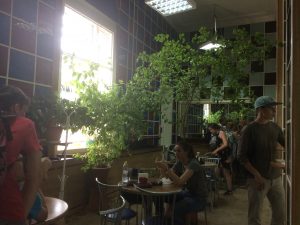
Out of the entire day, my favorite moment would have to be when Moscow State University Professor Valeri Ivanovich took us to his childhood bakery shop, “Лакомка”, where he treated us to pastries and tea. This shop definitely stood the test of time, running for over 40 years with its delicious eclairs, donuts, and cookies. This being our last day in Vorkuta, there was a bittersweet feeling. However, I wouldn’t want to spend it any other way then surrounded by friends and colleagues in a cute little pastry shop talking about our time in Vorkuta over some tea and delicious desserts.
July 23rd:
Anna Summi
Maybe it’s because just a few days ago we spent over 10 hours in a train compartment that doubled as a sauna. Or maybe it’s because no one thought that travelling to Siberia in July could’ve easily been mistaken for a trip to the tropics if you closed your eyes, if only for the high temperatures and constant bug buzzing halo. But the feeling of relief and refreshment that swept through the group as we realized the train that we would attempt to call home for the next 40 hours was air-conditioned was instantaneous and all encompassing.
The entirety of today will be spent zooming, at the hyper-speed of around 50 mph, toward Moscow and the reality of the lives we left in America for the past month. Throughout the compartment, over meals in mess kits of bread and cheese and maybe the odd cup noodles, conversations of reflection and fond memories of the trip have begun. I don’t think anyone really knew what to expect when we all met at Dulles nearly three weeks ago, but without a doubt, this experience will stick with each one of us for a long time to come.


